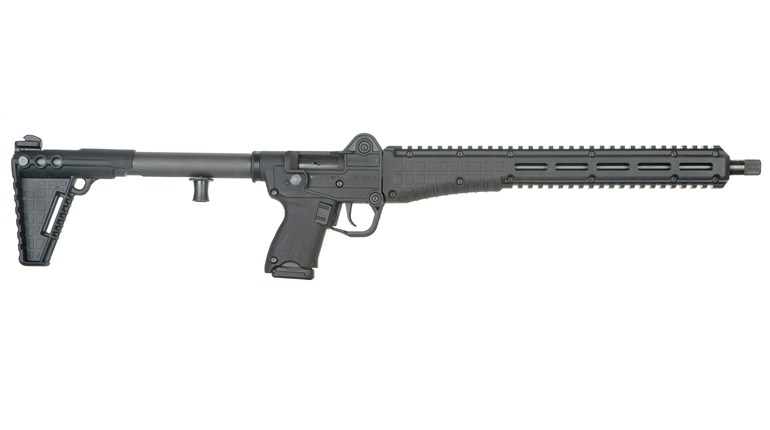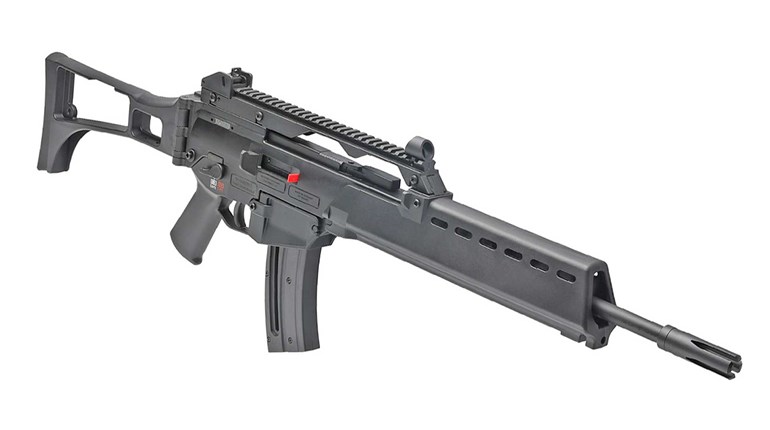
To be honest, I wasn’t much impressed with Ruger’s early version of a pistol-caliber carbine. It was produced from about 1996 to 2006 in both 9 mm and .40 S&W, but never really caught on. In 2019, Ruger tried the concept again with its PC Carbine in 9 mm and I was hooked. The new PCC remedied all the faults of the original carbine with features shooters demand and have come to expect. Like the takedown 10/22, the PCC is a takedown rifle, and can even be stored in the same carry bag as the 10/22 Takedown. It has adjustable iron sights, rails for attaching optics, lights and lasers, a threaded barrel and best of all, can be set up to use commonly available Glock magazines. The PCC is available in several versions and two chamberings, again 9 mm and .40 S&W.
Ruger drives growth in the company through new product introductions, and every time it comes out with a new gun, that product generally evolves into a complete line with one version following another. This leaves me, and all of you, wondering: What’s next? In the case of the Ruger PCC the wait is over and now it’s here: the Ruger Pistol Caliber Charger, made in the company’s Newport, NH, factory.

Once more, Ruger has opened up its bag of tricks and returned to a successful formula. As the 10/22 rifle became a Charger pistol, so too has the PCC. What’s a Charger? It’s Ruger’s name for a pistol variant of a semi-automatic carbine, meaning it has the action of the carbine with a shortened barrel, no buttstock and a pistol grip. As did the PCC, the new Charger is first appearing chambered in 9 mm, and it doesn’t take much imagination to figure out that other pistol calibers will certainly follow.

The PC Charger I tested has a black composite body and a Picatinny rail atop the receiver. The polymer frame is actually a chassis that allows you to attach aftermarket AR pistol grips to the Charger, which comes with a Ruger OEM model attached. No sights are provided, so it’s clear Ruger intends you mount the sights of your choice. Rail-mountable flip-up “iron” sights will work, as will any number of red-dot sights or other options. I mounted a new Leupold Freedom RDS to the PC Charger, but found the mount included with the sight to be a touch high for this gun. To get it to sit a little lower, I installed the scope with a set of medium rings, providing for about 1.5 inches of offset.
The Charger has a 6.5-inch threaded barrel just itching to have a suppressor attached. Mounting one of the many direct-thread pistol sound suppressors to this handgun is easy, and for those who don’t have or want one, it ships with a thread protector already attached. Another useful attachment would be a blast diffuser, but that is less of a concern with the pistol-caliber chambering.

Other features include an anodized aluminum freefloat handguard with M-Lok slots for attaching accessories. Because the Charger has such a short barrel, Ruger includes a hand stop on the underside of the handguard. As with the PC Carbine, the magazine release and bolt handle can be reversed; I prefer both on the port side. The instruction manual includes clear directions for taking the Charger apart, a procedure which is just like that of the PCC, and installing the included Glock-magazine adapter. This is the way to go, I think, because you now have the ability to use extremely common Glock 10-, 15-, 17- and 33-round magazines designed for the Austrian company’s 9 mm pistols.

At the aft end of the receiver, there is a molded-in Picatinny rail to attach arm braces and two sling swivel sockets. I used a leather single-point sling from Simply Rugged Holsters that allows the Charger to be slung across the body or under an arm for concealment and aids in shooting accurately when the Charger is pushed forward under sling tension. The trigger on my sample is typical of the PC Carbine design and breaks at a bit heavier than 5 pounds.

If you own, have shot, have looked at or have read about the Ruger PC Carbine, you basically know everything about the new PC Charger except how the shorter barrel affects performance. Therefore, rather than bore you by repeating even more of what you either already know or can easily find about the gun, I’ll focus on how it shot.
I was unable to procure a stabilizing arm brace in time to get my range testing done, so I shot the Charger off sandbags as it shipped, putting through it a variety of defensive ammunition—more variety than normal in keeping with the focus on “how” rather than “what.” The first, something of a gold standard for defensive loads, was Hornady Critical Duty with a 135-grain FlexLock bullet. Lately, I’ve become enamored of solid-copper hollowpoint bullets for use in defensive-pistol ammunition, so the next four loads I chose to test all had these projectiles. I’ve been using the DoubleTap 77-grain hollowpoints for a couple of years now, and it’s my choice of defensive ammunition in my Ruger PC Carbine. Here, it achieves velocities in excess of 1,900 fps, expands perfectly in ballistic gelatin and achieves 13 to 14 inches of penetration.
I also tested a load from Super Vel to see how the rekindled ammunition brand functioned out of a somewhat-unconventional barrel length. The first is the Hush Puppy load. This was a hot +P load using a 115-grain solid-copper hollow-point bullet.
The last load I chose to test is also the newest, a 115-grain TCX (Total Copper X-panding) load from Defiant Munitions. This is a new company founded by Pete Pi Jr., son of the creator of Cor-Bon Ammunition.

Unsurprisingly, the lightweight DoubleTap bullet won the velocity race by a wide margin. Because this is a pistol built on a carbine action, the velocities were faster than we’d normally see from a handgun, but then, the barrel is only 1.5 inches longer than that of a full-size pistol, so the velocities weren’t all that eye-popping. The average group size for all 25 groups fired was 1.35 inches, proving this pistol can deliver outstanding accuracy at ranges beyond where most folks can shoot a traditional handgun well.
Finally, I need to answer the question of what the PC Charger is for. Is it an accurate, versatile pistol that happens to be based on a carbine action, but has many practical uses, or is it simply a fun gun to shoot at the range? Really, it’s both. I see it as an ideal defensive tool suitable for use in a vehicle or camper, defending the home or being carried concealed on a sling by security personnel. It’s reliable, practical and yes, fun, and I predict Ruger will sell every one it can make.








































